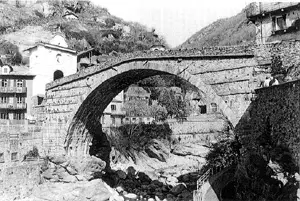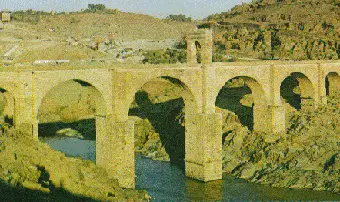Bridges have been around for centuries as a means to get from one side of the bank to the other. Ancient architects and engineers began building crude bridges and we have created bigger and better bridges for foot traffic and vehicular traffic. What is exactly is the history of bridges? We are going to discuss about it from the beginning.
Ancient Romans have been documented as creating one of the most amazing wonders in our known history. They are responsible for building the first bridges. As civilizations spread out farther and farther, the need for stable and permanent roads and bridges became a priority.

Rivers and streams needed to be forged and people were finding ways make it easier on them to cross. Some used logs piled up into the water to build a bridge. Others used large stones to be able to cross more easily. Greek builders and mathematicians began developing systematic ways to construct lasting bridges that were sturdy and could handle the stress of everyday traffic.
The Romans compounded on these concepts and took it a step further. They introduced stone arches to the design and implementation of bridges. Some say that the history of bridges started with the Roman Empire because of their contribution to the engineering of bridges as we known them today.
Stone arches are not easy to create, especially in a time when heavy machinery was not yet invented. Builders had to create wooden arches as the form for the structure and then use the stones and mortar to create the actual stone arch. Mortar was used extensively by the Romans as they discovered its bonding properties and that once dry, it did not dissolve in the rain or flood waters.
As the Roman Empire spread, so did the construction of their bridges. There were over 900 bridges constructed during the reign of the Roman Empire throughout Europe, Asia and Africa.
The Roman stone arch bridges were shaped in a semi-circle and made in segments that offered better protection from floods. This also helped builders to make the bridge lighter. There are many Roman bridges that are still in existence and can be viewed such as the Alcantara Bridge and the Karamagara Bridge.

Eventually wooded bridges made their appearance in the bridge history. They did not have the lasting power that stone bridges have but they became very popular.

As engineers and designers became more modernized, they were able to create wooden bridges that were more sophisticated. They began popping up around the world. The oldest wooden bridge is found in Europe and hovers above the Reuss River in Lucerne, Switzerland.

From the construction of wooden bridges to the use of steel in the history of bridges, people have revolutionized bridges around the world. There are still stone bridges and wooden bridges that can be seen and some are even still functional, but for the most part, new bridges are being designed using steel. These bridges are able to withstand large loads as well as the wear and tear of daily use.


Throughout history, bridges have evolved from crude stones and logs to wonderfully functioning works of art. Engineers and architects are becoming famous and making history with their innovative designs and implementations of unique, yet sturdy bridges around the world.
